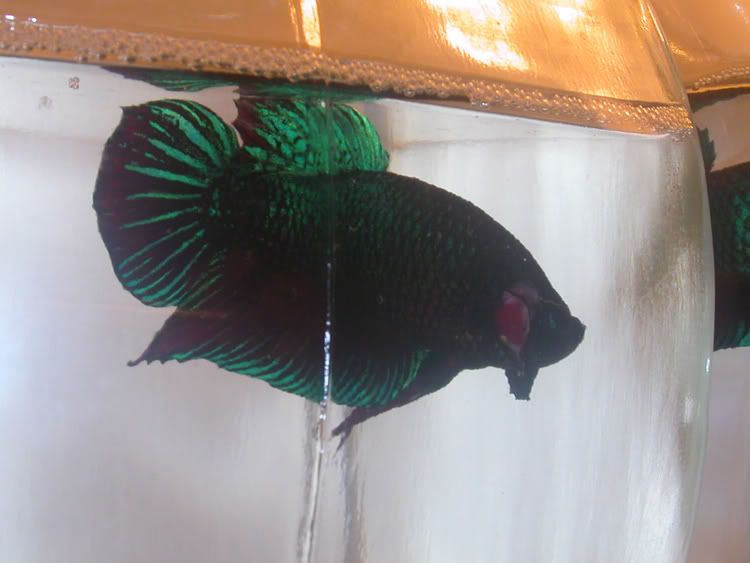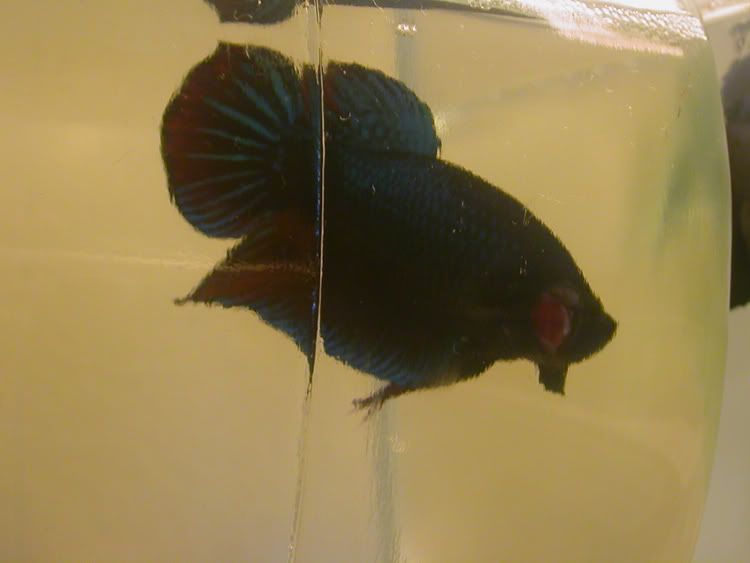Marco,
Honestly, that camera has (almost) everything you need to take good pictures, if you know what you're doing. I wouldn't waste money on a new camera if I were you, think about how many orchids you could buy for the price of a new camera....

I'm sure you know that it would be impossible to write out everything that's important to taking good pictures in a single post like this, and I certainly don't have all the answers anyway. I can give you a few tips to start out with, though.
- When it comes to lighting, the LARGER the light source (not brighter), the softer and more diffuse the lighting will be in your photo. That is, something like a 4 foot fluorescent tube will give you softer light than a 4" incandescent bulb. Better yet, if you reflect light off of a wall or ceiling, then the size of that reflected surface effectively becomes the size of your light, making for very nice soft lighting, which is great if you want soft lighting (and most of us do, I think).
- Your camera, Marco, has exposure compensation. Learn how to use it! It's one of the most useful features on your camera, if you don't want to carry around a 18% grey card (and I don't know if your camera has exposure or focus lock anyway).
Basically, this is the way that exposure compensation works. Your camera assumes that the tones in picture you're taking average out to be medium grey (in brightness) when it calculates the exposure. Usually this is true, so most of your snapshots are exposed fine.
However, if you take photos in which a large portion of the frame is black or white (black velvet backdrop, for example...) your camera will still assume that they are grey, and expose them so that they appear grey in your final picture. So, theoretically, if you were to take a photo of a white sheet or a black piece of velvet, both of them will turn out as the same tone of grey in your resulting photo...if you don't use exposure compensation.
If that doesn't make sense to you, you can just remember this rule: If you're taking a picture of something that is pure black and you want it to appear black, under-expose it by 2 f-stops. On the other hand, if you're taking a picture of a white backdrop, you'll need to over-expose by 2 f-stops.
Along those lines, if you're taking a picture of a bloom that is against a black backdrop, and that backdrop takes up a significant portion of the frame, you'll need to under-expose your photo. If you're taking a photo of a bloom against a bright backdrop, you'll need to over-expose it.
This can all be done by sliding the little pointer towards the +2 or the -2 on your camera's exposure compensation settings. Very simple. It does take a little experimentation to get familiar with how certain scenes will affect your camer's light meter, so as you practice with it a bit, you'll get to know whether you should set your camera a - 1 f stop, or -1.5 f-stops, for example.
With your camera, you can also set the white balance, which is very important when you're taking pictures under artificial light. This is something you'll have to look up how to do in your camera manual, but its pretty simple usually.
Essentially, what you'll do is this:
Set up the photo you wan to take, then hold a white piece of paper in front of the bloom, with the artificial lights shining on it, and then set your white balance on it. This will help give you accurate colors in your photo.
Oh, and GET a tripod! Makes a huge difference in photo quality... if nothing else, it lets you not use the flash

I usually like to use a black background, just because it is less distracting than other colors or patterns, but it is admittedly not as creative as some other possibilities. I won't even get into issues of composition... all of that is very subjective anyway

Many people will tell you, though, that it is best not to put the subject of your photo in the dead center. Instead, divide your photo into thirds and place the subject on one of the dividing lines.
And in the end, there's nothing wrong with taking 10-15 pictures... that's just part of learning how to take good pictures

What a mess of a post this has been! I guess this is what I get for posting in the middle of the night like this. If you have any questions, let me know... I might be able to clarify

- Matt
In case you're wondering, an f-stop is a standard for calculating exposure, based on doublings of light. That is, if you add one f-stop of light to your exposure, twice as much light will hit your film (or CCD in this case). You'll notice that everything related to exposure (on manual control cameras) is based on doubles... shutter speeds go from things like 1/60 to 1/125 to 1/250 of a second. Each step cuts the amount of light reaching the film in half, a 1 f-stop difference. Film speeds are the same way... 100 speed film takes twice as much light to expose as 200 speed film, which takes twice as much light to expose as 400 speed film, etc. Aperture works the same way, but it's not so obvious from the numbers

 I was wondering if anyone has any pointers as to how to take good pictures, lighting, lighting positioning, cheap setups, camera's what to look for, optimal background etc.etc. anything to get an accurate picture as possible and avoid having to take 10-15 pictures
I was wondering if anyone has any pointers as to how to take good pictures, lighting, lighting positioning, cheap setups, camera's what to look for, optimal background etc.etc. anything to get an accurate picture as possible and avoid having to take 10-15 pictures 








